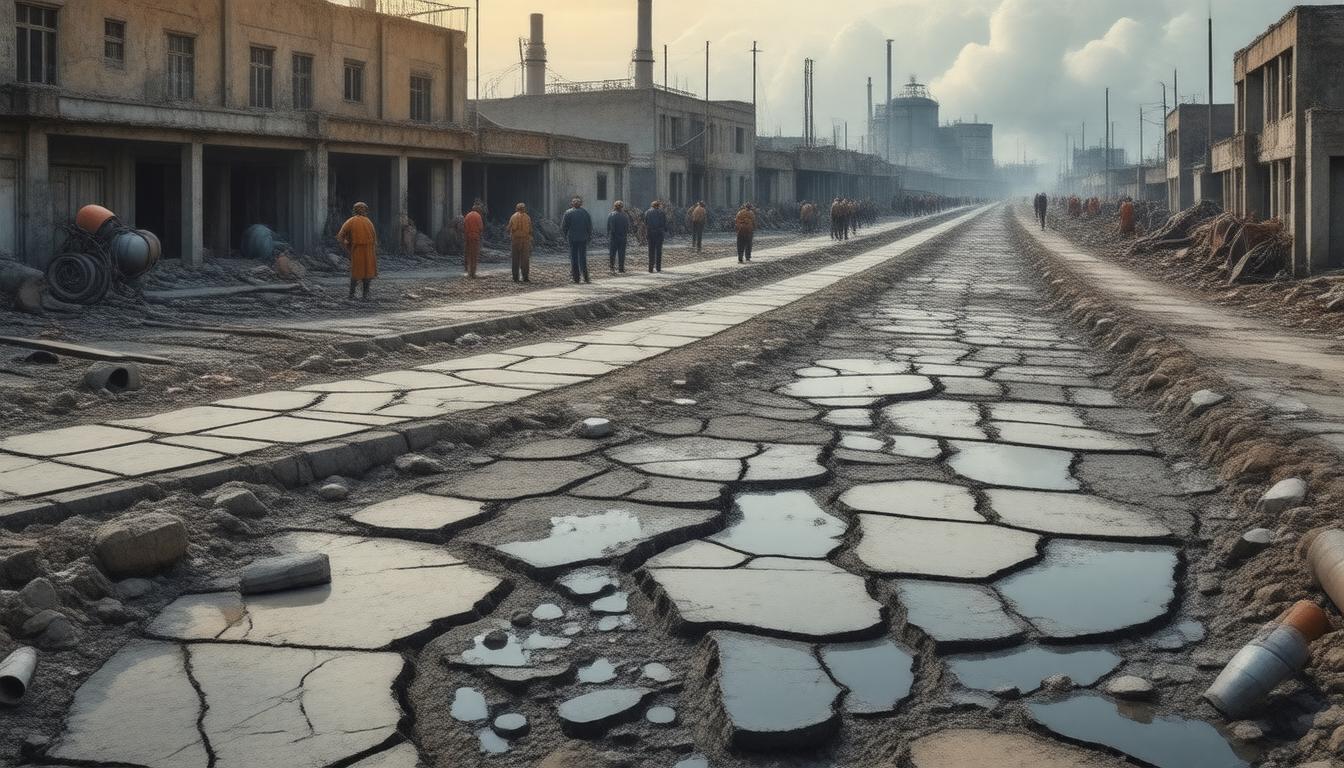

Effective Methods to Unclog Your Sink Drain
Introduction
A clogged sink Drain can be a homeowner’s nightmare, leading to a range of inconveniences from bad odors to slow Drainage. Knowing how to effectively unclog your sink Drain not only enhances the efficiency of your plumbing but also saves you from costly repairs and professional services. Whether your blockage is minor or requires more advanced methods, this guide will provide you with the essential knowledge and techniques to tackle the problem head-on.
Understanding the root cause of the blockage is the first critical step in resolving any Drain issues. Common household materials such as food particles, grease, and soap residue often find their way into your sink Drain, leading to stubborn clogs over time. By identifying the signs of a clogged Drain and employing the right tools for diagnosis, you can ensure a quick and efficient solution.
For minor blockages, simple DIY methods using household items like boiling water, baking soda, and vinegar can often do the trick. These approaches are not only cost-effective but also environmentally friendly. However, for more persistent clogs, advanced techniques such as using a plumbing snake or considering chemical Drain cleaners may be required.
This article will walk you through various methods to unclog your sink Drain, ranging from basic DIY solutions to advanced techniques requiring specialized tools. By the end of this guide, you’ll be equipped with the knowledge to handle almost any sink blockage and know when it’s time to call in a professional Plumber for assistance.
Identifying the Cause of a Clogged Sink Drain
Common Culprits of Sink Blockages
Understanding what causes a sink Drain to clog is the first step toward effective unclogging. Various materials and debris are notorious for creating blockages in your sink. One of the most common culprits is food particles that get washed down the kitchen sink. These can range from small bits of vegetables to larger food scraps that do not fully disintegrate. Grease and oil are also major offenders, as they tend to solidify and build up along the walls of your pipes, narrowing the passage for water flow.
In the bathroom sink, soap scum is often the primary problem. Soap particles combine with minerals in water to form a hard residue that clings to the pipes. Similarly, hair strands can wrap around soap scum and other debris, creating a substantial clog over time. In general, anything that does not easily dissolve in water or is too large to pass through the pipes can contribute to a blockage.
Signs Your Sink Drain is Clogged
Spotting the early symptoms of a clogged sink Drain can save you a lot of hassle and potentially costly repairs. One of the initial indicators is slow Drainage. If you notice that water is pooling in the sink and taking longer than usual to Drain, it’s a sign that something is obstructing the flow.
Unpleasant odors emanating from the Drain are another common symptom. As organic materials like food or hair decompose in the Drain, they can produce foul smells that waft up through the sink. This is particularly problematic in kitchens where food waste is prevalent.
Another telltale sign is gurgling sounds coming from the Drain. These sounds indicate air trapped by a clog trying to escape as water attempts to flow past it. Monitoring these signs can give you a head start on addressing the issue before it becomes a full-blown problem.
Tools for Diagnosing the Blockage
Once you’ve identified that your sink Drain is clogged, the next step is diagnosing the exact location and cause of the blockage. Various tools can assist in this investigative stage. One valuable tool is a Drain camera. This device comprises a small, waterproof camera attached to a flexible cable that can navigate through your pipes, providing real-time video footage of the inside of your Drain. This allows you to pinpoint the blockage and determine its composition directly.
Another effective tool for diagnosing and even removing blockages is a plumbing snake or auger. This flexible, slender tool can be manually or mechanically fed down the Drain to reach clogs deep within the pipes. The snake’s end can either hook onto or break up the debris, allowing you to pull it out or flush it away. Plumbing snakes are particularly useful for more stubborn clogs that aren’t easily resolved with simple home remedies.
By appropriately identifying the cause and location of your sink Drain clog, you can choose the most effective method for addressing it, saving time and effort in the process. With a clear understanding and the right tools at your disposal, unclogging your sink Drain can be a straightforward task.
DIY Methods to Unclog Your Sink Drain
Using Boiling Water
One of the simplest and most effective DIY methods to unclog your sink Drain involves using plain boiling water. This age-old technique works best for minor clogs, particularly those caused by grease and soap scum.
Here is a step-by-step guide on how to use boiling water to dissolve mild blockages:
- Ensure the sink is empty and remove any standing water if possible.
- Boil a kettle or pot of water until it reaches a rolling boil.
- Carefully pour the boiling water directly into the Drain in two to three stages. This allows the hot water to work through the clog effectively.
- Wait a few minutes between each pour to let the hot water break down any grease or soap scum causing the blockage.
- Check to see if the water Drains properly after the procedure. If not, you may need to repeat the process.
This method is simple and eco-friendly but most effective for less severe clogs. If boiling water alone doesn’t do the trick, you may need a more comprehensive solution.
Baking Soda and Vinegar Solution
The combination of baking soda and vinegar is another popular and natural method to unclog your sink Drain. The chemical reaction between these two household items helps break down stubborn clogs, including those caused by food particles and organic debris.
Follow these steps to use the baking soda and vinegar solution effectively:
- Remove any standing water from the sink and ensure the Drain is as dry as possible.
- Pour about one cup of baking soda directly into the Drain.
- Follow the baking soda with an equal amount of white vinegar. The mixture will start to fizz and bubble, which is a normal reaction.
- Cover the Drain with a plug or rag to contain the fizzing action within the pipe. Let it sit for about 15-20 minutes.
- After waiting, flush the Drain with boiling water to help clear the loosened debris.
This method can effectively tackle moderate clogs without using harsh chemicals. Repeat the process if necessary if the blockage is not completely cleared.
Plunger Technique
A plunger can be an incredibly effective tool for removing sink Drain blockages. Although more commonly associated with toilets, using a plunger on a sink can help dislodge stubborn clogs caused by various debris types.
To properly use a plunger to unclog your sink Drain, follow these steps:
- Ensure you have a cup-shaped sink plunger (not the flange type used for toilets).
- If your sink has an overflow opening, plug it with a wet cloth to create better suction.
- Place the plunger’s rubber cup over the Drain and ensure a tight seal.
- Fill the sink with enough water to cover the plunger’s cup, which creates the seal needed for plunging.
- Firmly push the plunger up and down several times to create suction and pressure. Make sure to maintain the seal.
- Quickly remove the plunger after a few thrusts to see if the water starts to Drain. Repeat the process if necessary.
Using a plunger is often effective for more significant blockages that boiling water or baking soda and vinegar cannot remove. It’s a good intermediate step before turning to more advanced or professional methods.
Combining these DIY methods can effectively manage and unclog your sink Drain without needing professional help. These approaches save you money and minimize environmental impact by avoiding harsh chemicals typically found in commercial Drain cleaners. However, if these methods fail to resolve the issue, it may be time to consider more advanced techniques or seek professional assistance.
Advanced Solutions for Stubborn Clogs
Plumbing Snake or Auger
When DIY methods like boiling water, baking soda and vinegar solutions, and plunging have failed, it’s time to bring out the big guns – the plumbing snake or auger. These tools are designed to reach deep into the Drain and manually dislodge tough clogs that simpler methods cannot break through.
Using a plumbing snake involves carefully inserting the snake into the Drain until you feel resistance, indicating that you’ve hit a clog. Then, you slowly twist the snake to break up the blockage. Here are some detailed steps to follow to ensure safety and effectiveness:
- Step 1: Prepare Your Area – Ensure the area around the sink is cleared. Have a bucket or towels on hand to catch any spillover that may occur during the process.
- Step 2: Insert the Snake – Carefully feed the snake into the Drain, turning the handle clockwise. Be gentle to avoid damaging the pipes.
- Step 3: Break Up the Clog – Once you feel resistance, twist and push the snake to break up the blockage. Pull the snake out periodically to clean off any debris, then reinsert as necessary.
- Step 4: Flush the Drain – After the clog is broken up, flush the Drain with hot water to help clear any remaining debris.
Taking safety precautions is crucial when using a plumbing snake. Wear gloves to protect your hands and proceed gently to avoid causing more significant damage to your plumbing system.
Chemical Drain Cleaners: Pros and Cons
Chemical Drain cleaners are a popular yet controversial solution for stubborn clogs. These products contain powerful chemicals designed to dissolve hair, grease, and other debris obstructing your Drain. Before resorting to chemical Drain cleaners, consider their pros and cons:
Pros:
- Effectiveness – Chemical Drain cleaners can quickly dissolve tough clogs, restoring proper Drainage within minutes.
- Ease of Use – They are easy to find in stores and typically involve simply pouring the solution down the Drain and waiting.
Cons:
- Potential Damage – The harsh chemicals can corrode and damage your pipes over time, especially if used frequently.
- Health Risks – These products can be dangerous to handle, causing burns or respiratory issues if inhaled or if they come into contact with your skin.
- Environmental Concerns – Chemical Drain cleaners are not environmentally friendly and can contribute to water pollution.
Given these potential risks, many homeowners seek safer alternatives. Enzyme-based Drain cleaners offer a gentler option, utilizing natural bacteria or enzymes to break down organic matter. These products are less harsh on your pipes and the environment, though they may take longer to clear a stubborn clog.
When to Call a Professional Plumber
Sometimes, despite your best efforts, a clog is simply too stubborn for DIY methods. Recognizing when to call a professional Plumber is crucial for maintaining the long-term health of your plumbing system. Here are some signs it’s time to seek expert help:
- Persistent Clogs – If you find that no matter what you do, the blockage keeps returning, it’s likely a sign of a more severe issue that requires professional diagnosis.
- Multiple Clogs – If several Drains in your home are clogged at the same time, it could indicate a problem with your main Sewer line, a situation that definitely needs professional attention.
- Foul Odors – Unpleasant smells that persist despite cleaning efforts suggest that the clog may be located deeper within your plumbing system.
- Gurgling Sounds – If you hear gurgling sounds when water Drains, this could indicate a blockage or issue in your vent system, requiring a Plumber’s expertise.
- Water Damage – If you’re noticing water damage around your kitchen or bathroom, this could hint at a hidden leak or severe clog, both of which demand professional intervention.
Calling a professional Plumber not only resolves the immediate issue but also helps prevent future problems. Plumbers have access to advanced tools like high-definition Drain cameras and hydro-jetting equipment that can thoroughly clean and inspect your pipes, ensuring your Drainage system remains in top condition. Additionally, they can provide expert advice on maintaining your Drains to avoid recurring clogs.
In conclusion, tackling a stubborn clog often requires a layered approach. Starting with DIY methods can solve minor issues, while more advanced tools and professional help may be needed for persistent problems. By combining these strategies, you can effectively unclog your sink Drain and maintain a healthy, efficient plumbing system.
Conclusion
In summary, understanding how to unclog a sink Drain can save you both time and money while ensuring the proper functioning of your household plumbing. By effectively identifying the cause of the blockage and recognizing the symptoms of a clogged Drain, you can take informed actions to address the issue.
DIY methods such as using boiling water, a baking soda and vinegar solution, or a plunger can often resolve minor clogs. For more stubborn blockages, advanced solutions like a plumbing snake or ocassional use of chemical Drain cleaners may be necessary. However, it’s crucial to weigh the pros and cons and be aware of the potential risks associated with chemical cleaners.
Ultimately, knowing when to call a professional Plumber can prevent further damage and ensure a long-term solution to your Drainage problems. Keeping your sink Drain clear and functional not only enhances your home’s hygiene but also contributes to the longevity of your plumbing system.
By following these effective methods, you can maintain a clog-free sink and enjoy a hassle-free kitchen or bathroom experience.









